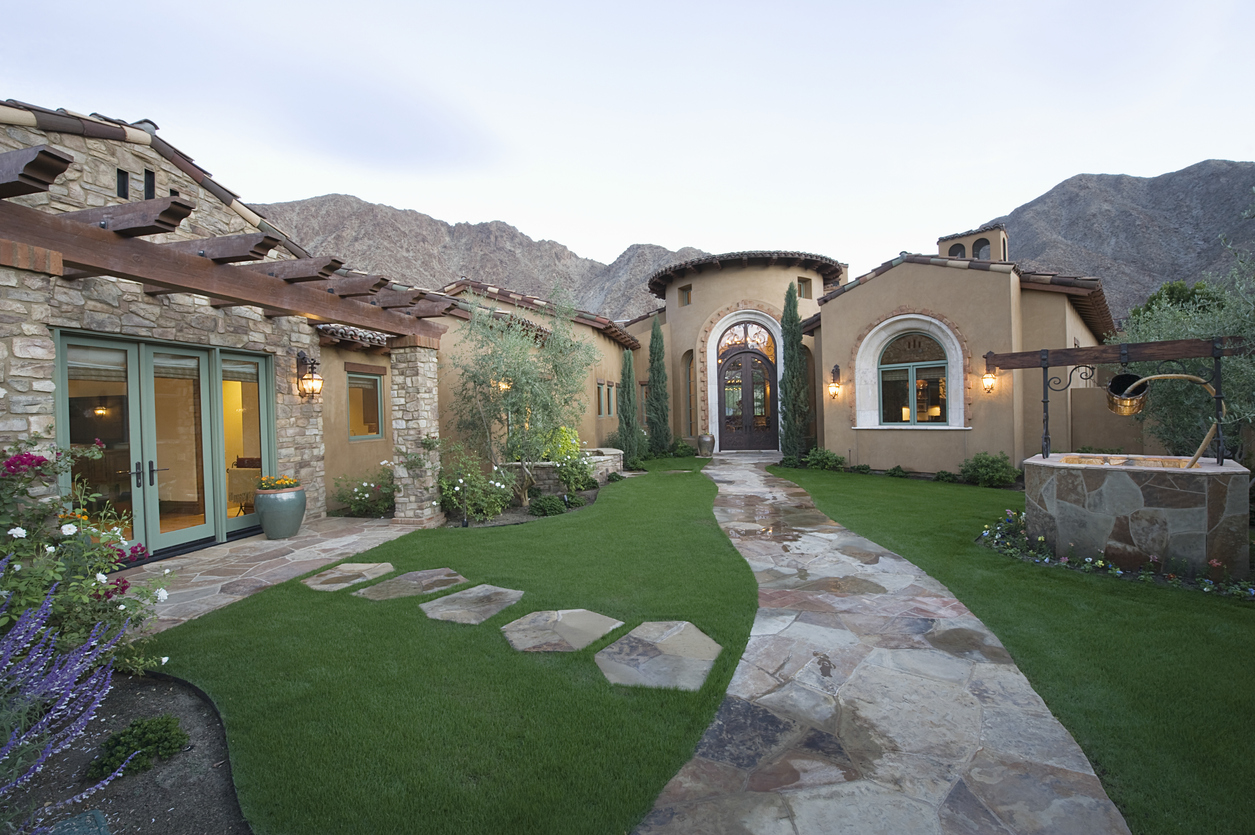
When remodeling your home, choosing a design theme that reflects your personality and lifestyle is crucial. Whole home remodel provides a unique opportunity to transform every room, ensuring a cohesive look and feel that resonates throughout your space.
Among the many styles to consider, Spanish Revival stands out for its rich heritage and adaptability, merging historic elegance with modern living. This architectural style, rooted in the 10th and 11th centuries, is known for its rustic charm, stucco walls, and distinct tile roofs. Incorporating Spanish Revival in modern homes allows for a fusion of timeless design with contemporary comfort.
On the opposite end of the design spectrum, the minimalist approach simplifies spaces, stripping back to the essentials to create a serene, uncluttered environment. This design theme emphasizes clean lines, functional furniture, and a monochromatic color palette that aims to elevate the home’s sense of space and time.
Whether you gravitate towards the intricate details of Spanish Revival or the sleek simplicity of modern minimalist design, you must carefully plan and execute your home transformation to achieve the desired outcome.
Spanish Revival architecture carries a distinct blend of rich historical roots and aesthetic appeal that you can gracefully integrate into your modern home for a touch of classic elegance and warmth.
Spanish Revival, a unique design that drew heavily from Spanish Colonial architecture, emerged in the United States in the early 20th century. This style flourished in areas like San Diego and is recognized for its blend of Spanish and Mediterranean elements. It resonates with California’s historical background, reflecting the Spanish Colonial heritage prevalent in the region.
Spanish Revival architecture showcases distinct features that can infuse your home with character:
Incorporating Spanish Revival elements in your modern home design can be done with thoughtful touches:
By carefully selecting features of the Spanish Revival architectural style, you create a home that pays homage to a historical era and offers a timeless appeal adapted to contemporary living.
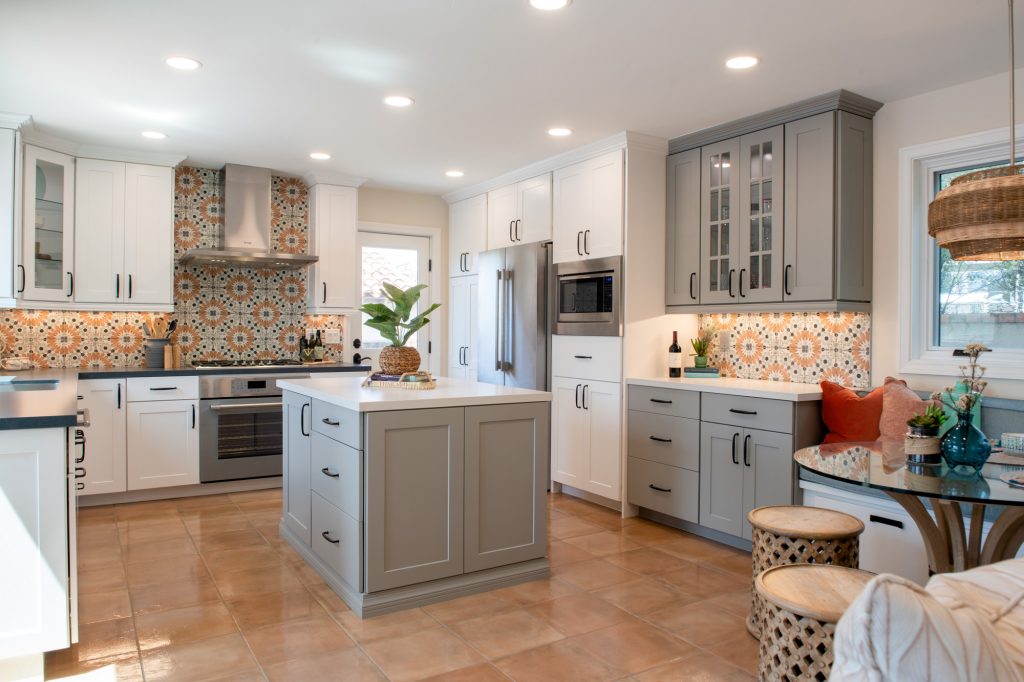
The right materials and architectural features are crucial when designing a home remodel. These choices define both the style and longevity of your home.
When you immerse yourself in the beauty of Spanish Revival architecture, you’re engaging with a history that melds Spanish Colonial aesthetics with touches of Mexican tiles. One of the quintessential materials in this design theme is terra cotta tiles.
Often found underfoot or gracing roofs, these tiles carry a warm, earthy hue, inviting a sense of traditional charm. Similarly, the use of hand-painted tile provides a unique artisan flair to surfaces, offering vibrant patterns and colors emblematic of historical Spanish design.
In addition to the intricate tiling, wood ceiling beams deliver structural support and visual warmth, evoking the rustic appeal of Spanish interiors. Furthermore, arches are a prominent architectural feature and hallmark of the Spanish Revival style, shaping entryways and windows with gentle curves. By incorporating cement tile or hand-painted varieties, you can revitalize your floors or walls with enduring designs for a hacienda.
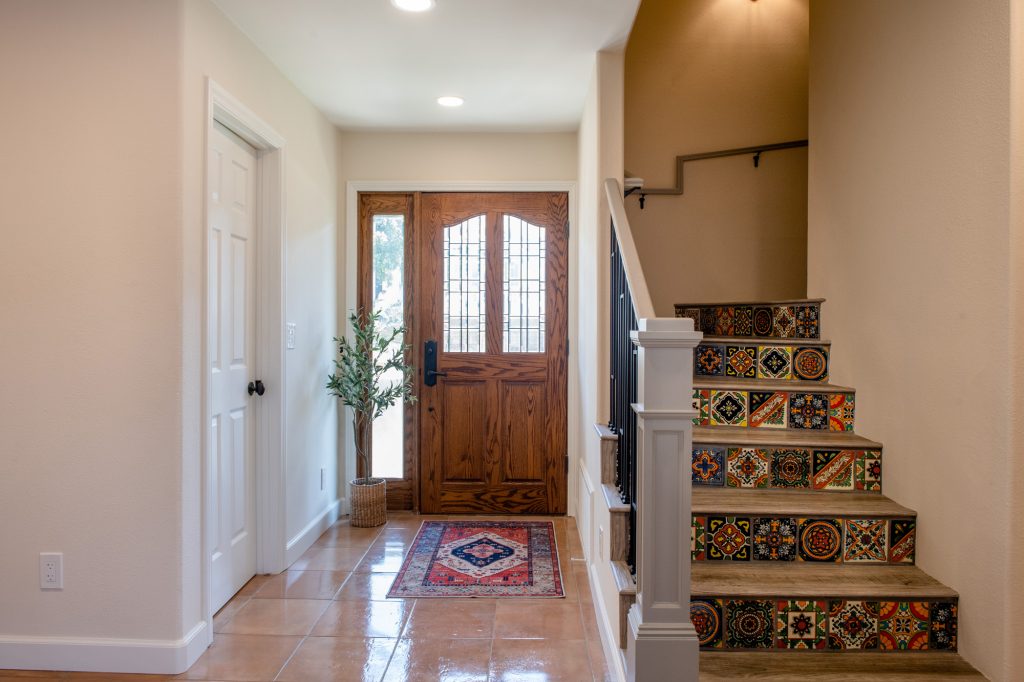
The materials you select for a contemporary minimalist design should echo a sleek, clean aesthetic. Here, less is more, and the materials themselves often serve a dual purpose: form and function.
You’ll find smooth, polished concrete floors with a pristine yet practical surface. In bathrooms and kitchens, cement tile emerges again but in muted, monochromatic tones or geometric patterns, adhering to the minimalist ethos.
The incorporation of large panes of glass not only invites natural light to flood your spaces but also extends a seamless transition between indoor and outdoor living. In modern designs, materials like industrial metals for frames or accents and composite materials for cabinetry present a cutting-edge, yet neutral, base upon which to build.
Wood may still find its way into a modern home, but it would typically be presented in a more refined, less rustic capacity. Think of sleek, straight-lined wood ceiling beams that offer a nod to the traditional but with a distinctly modern twist.

In any home remodel, your kitchen is the linchpin, harmonizing style with utility and merging old-world charm with new-world technology. Whether embracing the Spanish Revival’s warmth or the Modern Minimalist’s simplicity, the kitchen remains at the heart.
Your kitchen is not just a place for cooking; it’s a delicate balance of form and function. Modern Minimalist themes prioritize clean lines and neutral colors, creating an uncluttered and efficient space. Integrate a backsplash with geometric patterns to add a touch of sophistication without overpowering the minimalist appeal. For a Spanish Revival design, embrace ornate details and rich textures. An arched cooking alcove can serve as a focal point, offering visual depth and practical use.
Incorporating modern amenities into a Spanish Revival kitchen enhances your culinary experience without sacrificing style. High-end appliances camouflaged behind dark wood paneling or wrought iron give you the convenience you desire with the aesthetic of a hacienda kitchen. Meanwhile, Spanish-inspired tiles as a backsplash infuse vibrant colors and patterns, bridging the gap between traditional elegance and contemporary needs.
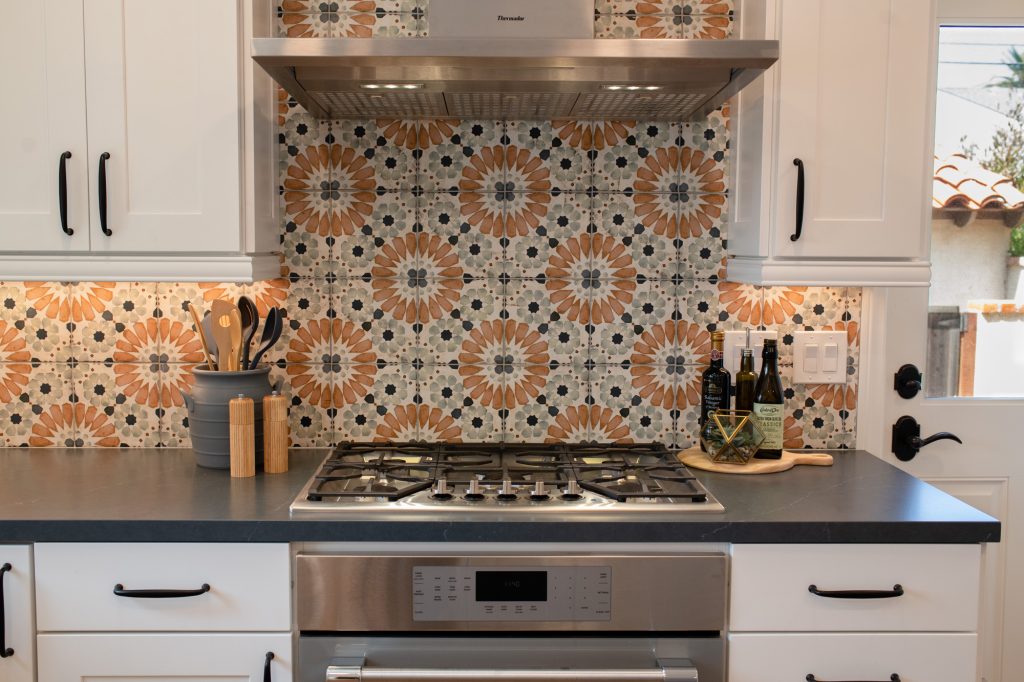
When you consider remodeling your home, the living spaces are the heart of the transformation. Daily life unfolds in these areas, and striking a balance between comfort and style is paramount.
Your living room is probably where you’ll spend most of your leisure time, so it must reflect both ease and elegance. Opting for neutral tones and soft textures can offer a soothing backdrop for relaxation, while bold design elements serve as focal points. Consider using comfortable yet stylish furniture, ensuring the space feels inviting and reflects your aesthetic.
Adding a fireplace can create a cozy ambiance and serve as a stylish and functional element in your living room. Modern fireplaces are not just heat sources but are often designed as statement pieces, combining practicality with architectural beauty.
Incorporating Spanish Revival elements into modern living spaces can add warmth and character. Here’s how you can achieve this blend:
Pair these traditional Spanish elements with modern furnishings and a minimalistic approach to ensure that the space doesn’t feel dated. The key is to keep the overall look sleek, with carefully chosen pieces that complement the Spanish details rather than compete with them. This approach allows you to enjoy a clean, contemporary feel and the richness of the Spanish Revival style.
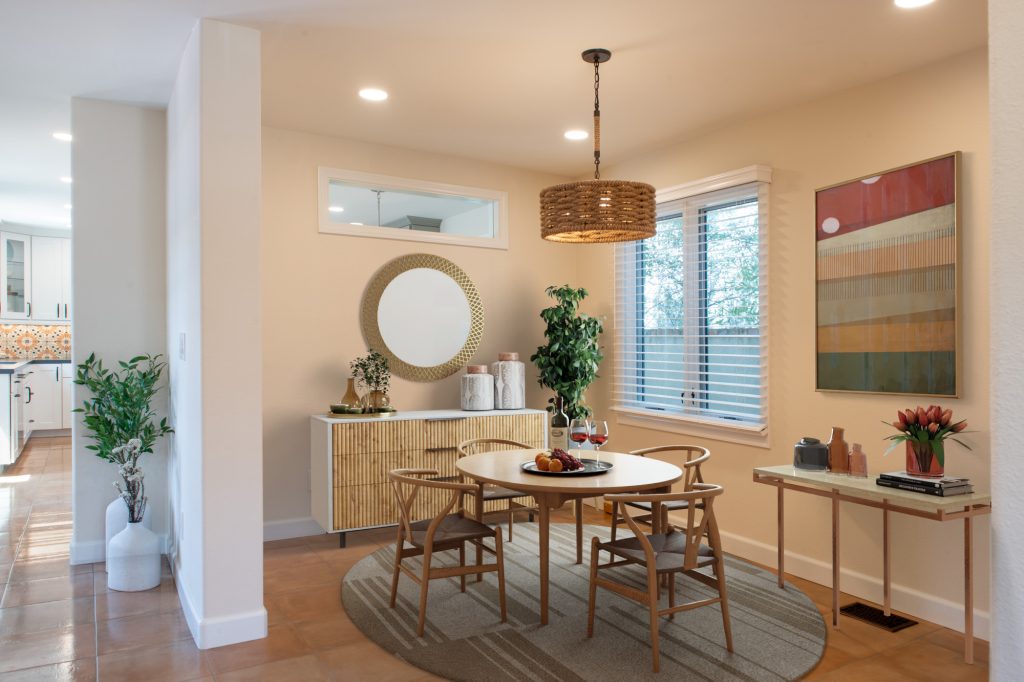
When you embark on a whole home remodel, you have the opportunity to create private oases within your home. You can transform your bedrooms and bathrooms into tranquil retreats that blend style with personal comfort.
Your master bedroom should be more than just a place to sleep. It can be a sophisticated retreat that reflects your style, whether a rustic master bedroom idea with beige walls and a stone fireplace or a modern minimalist space with neutral tones and sleek lines. In the ensuite, consider incorporating elements of a Spanish-style bathroom, like hand-painted tiles, which add charm and character, creating a serene sanctuary that seems worlds away from the hustle and bustle of everyday life.
Your guest accommodations should provide comfort and a sense of welcome. Incorporating a distinctive style, such as elements of Spanish Revival, can give these spaces uniqueness. It’s all about balancing modern amenities with design details that spark interest.
The choices you make for these private spaces define your guests’ experiences and your quality of life at home. You can create retreats within your house that offer peace and personality through thoughtful design.
Integrating indoor and outdoor spaces can enhance your living experience and increase your home’s value when it comes to whole home remodels. Incorporating elements like courtyards and specialized landscaping will add charm and create a seamless flow between your home’s interior and exterior.
Creating a courtyard or an outdoor room adds an intimate extension to your living space. Envision your backyard as a natural continuation of your home where you can relax, dine, or entertain. Imagine placing a central fountain in your courtyard for soothing sounds or installing a fire pit for year-round enjoyment. These features bring you and your guests a focal point and a gathering space.
Outdoor courtyards should blend with the indoor atmosphere. For a Spanish Revival theme, use terracotta tiles and wrought iron accents to maintain that aesthetic continuity.
When landscaping your outdoor space, consider beautiful and drought-tolerant plants to echo the Spanish Revival theme. Succulents and native plants can complement the architecture and conserve water.
Key Landscaping Elements:
Incorporating these design elements into your yard will help to blend the indoor and outdoor environments, crafting a cohesive and enjoyable living space.

If you’re looking to embrace the California lifestyle, adapting a Spanish Revival design theme for your home offers a seamless blend of classic charm and modern living. The outdoor space is a critical aspect of California homes, where indoor-outdoor living is not just a preference but a way of life. Your Spanish Revival home can feature spacious courtyards, patios, and balconies, allowing for an intimate connection with the natural environment.
Incorporating modern elements into your Spanish Revival home is critical to adapting it for a contemporary California setting. Large windows and glass doors can open your living space, inviting light and scenic views. Infuse your home with modern fixtures and finishes to bring a fresh twist to the traditional while ensuring that the essence of the Spanish Revival style remains intact.
Adapting a Spanish Revival home for the California lifestyle means creating a space that celebrates openness, natural light, and a seamless connection with the outdoors, all while honoring the rich architectural details that make the style so enduring.

In Spanish Revival design, lighting is not merely functional but a key component in crafting an authentic atmosphere. Your choice of light fixtures and placement can make a profound difference in achieving this style’s warm, inviting essence.
Positioning light fixtures is crucial for illuminating your Spanish Revival home in a way that enhances its architectural features. Iron or metal sconces placed on either side of doorways can cast a soft glow, highlighting the textured walls typical of the design. In living areas, consider using chandeliers or pendant lights made from wrought iron or metals with a patina finish, which should be hung at a level that complements the high ceilings and exposed wooden beams.
Remember, the goal is to produce an ambient glow that accentuates the charm of your Spanish Revival-themed spaces, avoiding overly bright or harsh lighting.
Your selection of light fixtures should echo the rich textures and materials prevalent in Spanish Revival design. Search for fixtures that feature:
Additionally, glass shades should ideally be a warm hue, such as amber or cream, to harmonize with the style’s natural palette. Accents like metal filigree or decorative chains can add an extra layer of authenticity to your Spanish Revival ambiance. By selecting the correct fixtures, you contribute to the illumination of a room and its entire aesthetic and historical narrative.
Modern advancements have also been integrated into lighting designs, allowing you to have the best of both worlds: the charm of Spanish Revival with the efficiency and convenience of modern technology. Incorporating dimmer switches or intelligent lighting systems can let you adjust the mood and intensity to suit any occasion while staying true to the thematic design.

Spanish Revival influences in furniture and decor bring warmth, history, and character to your home’s interior design. By utilizing rich woods, iron accents, and traditional craftsmanship, this style pays homage to its historical roots while adding an element of luxury to your space.
When choosing furniture to reflect the Spanish Revival style, you want pieces combining functionality and detailed craftsmanship. Opt for items made from dark, sturdy wood with ornate carvings; these often include tables, chairs, and storage pieces like sideboards or cabinets.
Look for classic silhouettes like those with elegant curves and turned legs. Using leather and textured fabrics in seating can also introduce the authentic Spanish feel you aim for. Consider elements of the Spanish Revival style, like ironwork, which can be found in the form of decorative brackets or hardware, to complete the look of your furniture.
Accessorizing plays a crucial role in fully capturing the essence of Spanish Revival interior design. Begin with ceramic and terra cotta to incorporate Mediterranean-inspired pottery within your space. Wall decor should include wrought iron elements, such as sconces or grills, and don’t shy away from vibrant textiles with rich patterns for throws or pillows. Opt for iron chandeliers or lanterns for lighting to maintain a rustic and refined atmosphere.
Add visual interest to the floors with patterned tiles often found in Spanish designs, providing a historical nod to the style’s origins. You can extend the use of dark wood and iron in Spanish Revival kitchens into other areas of your home with hand-carved wooden furniture pieces and oil-rubbed bronze finishes on fixtures and fittings.

When you decide to remodel your home, working with skilled architects and interior designers can make the difference between a satisfactory renovation and an extraordinary transformation.
To ensure your Spanish Revival or Modern Minimalist vision becomes a reality, selecting the right team is crucial—research candidates by reviewing their portfolios and noting projects that align with your aesthetics. For a Spanish Revival design, you may want to connect with professionals who deeply understand its characteristic white stucco walls and terracotta details. For Modern Minimalist spaces, look for professionals showcasing a mastery of clean lines and uncluttered spaces.
Transparent and regular communication with your design team is imperative. Start by creating a clear and concise design brief. That should detail your expectations, desired materials, and the essence of your aim for the Spanish Revival or Modern Minimalist theme.
Remember, renovations are collaborative efforts. Your involvement is as crucial as the expertise of the architects and designers you hire. By engaging actively and establishing clear lines of communication, you’ll help your team create a home that resonates profoundly with your personal style.
Embarking on a home renovation can significantly transform your living space, allowing for a fresh, new feel tailored to your family’s needs and tastes. The journey from dated to delightful involves meticulous planning and efficient execution.
Phase 1: Vision and Budget
Phase 2: Professional Consultation
Phase 3: Permits and Approvals
Phase 4: The Build
Following these structured phases sets the stage for a smooth renovation that elevates your home’s design and functionality.

In this section, you’ll find targeted answers to common inquiries about integrating the Spanish Revival style within the modern minimalist framework of whole home remodel designs.
Modern Spanish Revival interiors often blend traditional elements like wrought iron detailing, decorative tiles, and heavy wooden doors with more contemporary design touches. They emphasize rich textures and handcrafted materials that evoke historic elegance while aligning with modern quality and comfort.
To incorporate Spanish Revival elements into a modern minimalist home, focus on simplicity and selectivity. Use clean lines and a neutral color palette, and choose one or two characteristic features, such as terracotta tiles or decorative archways, to serve as focal points that honor the Spanish aesthetic without overwhelming the space.
The color palettes in Spanish Revival architecture typically include warm, earthy tones like terracotta reds, browns, and ochre, paired with accents in vibrant hues such as deep blues or greens. These colors reflect the Mediterranean landscape and create a cozy, inviting atmosphere.
Modern Spanish style differentiates itself from traditional Spanish Colonial design by incorporating cleaner lines and a more subdued color scheme. Traditional design often centers on rich dark woods and heavily textured walls, whereas the modern approach leans towards light, airy spaces with smooth stucco and a lighter color palette.
Key features of modern Spanish-style home exteriors include white stucco walls, red tile roofs, and elegant arches. Contemporary updates might introduce minimalist landscaping, streamlined outdoor lighting fixtures, and the use of modern materials that maintain historical integrity while refreshing the overall look.
When blending the Spanish Revival style with a minimalist aesthetic, it’s essential to prioritize balance and harmony in your remodel. Consider preserving character-defining elements like exposed wooden beams and ironwork while paring back on decor to maintain a spacious and uncluttered environment. Choose a few high-impact features to capture the essence of Spanish design within a minimalist context.

Kimberly Villa is a recognized expert in the Home Design and Remodeling industry. Her passion for the industry is matched only by her love for sharing insights, new trends, and design ideas. Kimberly’s expertise and enthusiasm shine through in her contributions to the Kaminskiy Design and Remodeling website blog, where she regularly shares valuable information with readers.